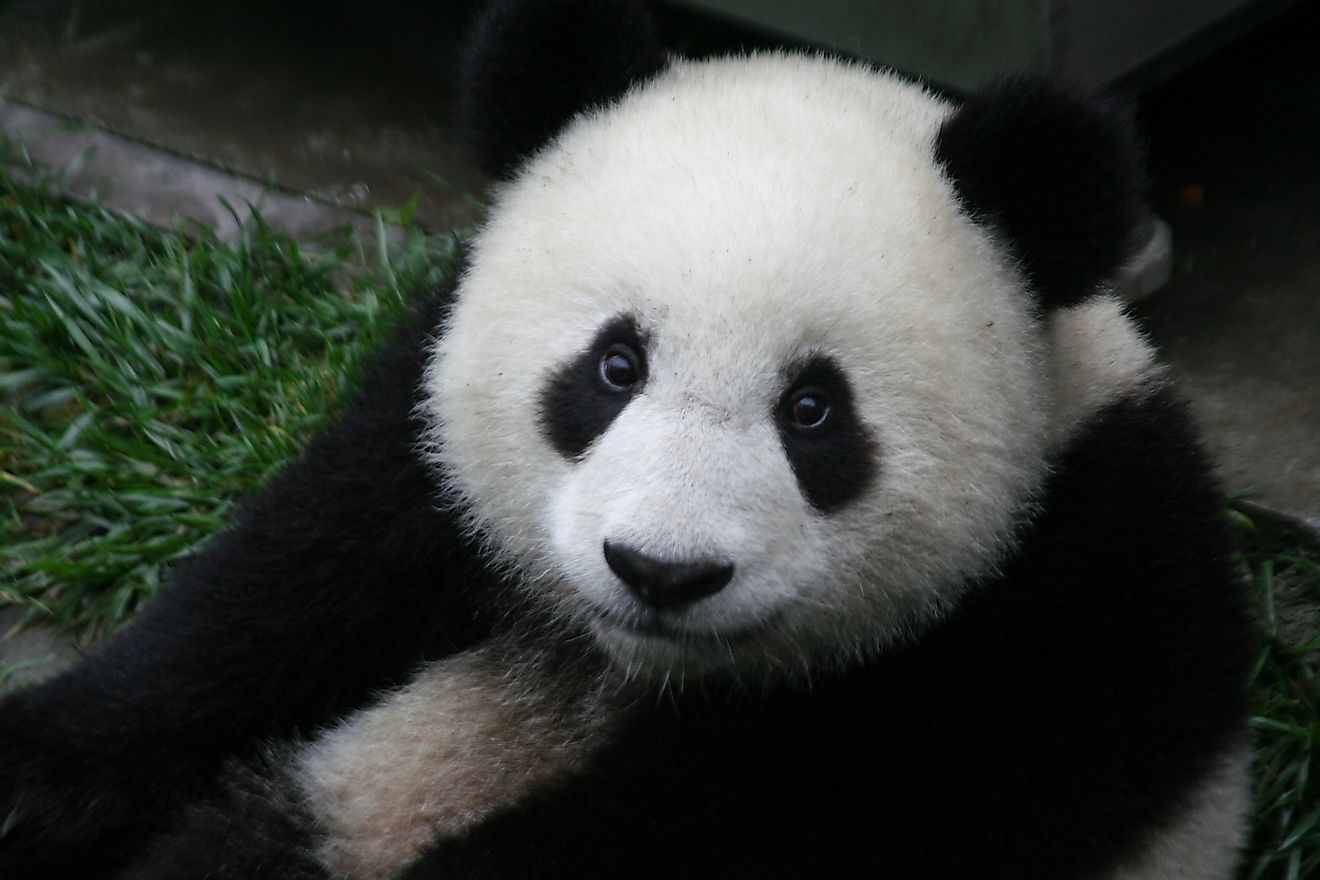Giant Panda Facts - Animals of Asia

5. Physical Description
The Giant Panda is a member of the bear family. It has a black-and-white-colored, thick, wooly coat covering the torso of its body. Predominately black fur, meanwhile, covers its eyes, muzzle, legs, shoulders, and its long wrist bones. Adult giant pandas weigh up to 330 pounds. From their noses to the hind-parts, they are 150 centimeters (59 inches) long, accentuated by a 10 to 15 centimeter (4-6 inch) tail. Their height to the shoulder is around 90 centimeters (~3 feet). The giant panda is an omnivore, and it eats mainly plants, supplemented by a share of meat from birds and small rodents as well.
4. Diet
Bamboo leaves, stems and shoots comprise 98 percent of the Giant Panda’s diet. But, since pandas have digestive systems akin to those of a carnivore, they can and will also occasionally eat small rodents, birds, and the small mammals known as "Pikas". Daily, an adult Giant Panda will consume 26 to 84 pounds of bamboo to meet their energy needs. The Giant Pandas obtain food by foraging through bamboo thickets in their native habitats. Using their elongated wrists that act like thumbs, they pluck bamboo and feed upon its stems, shoots, and leaves. Over the course of a typical day, the Giant Panda will spend a remarkable 12 hours eating.
3. Habitat and Range
The ideal habitat for the Giant Panda is that of a temperate broadleaf forest or mixed forest, especially those found in their native southwest China. The predominant Giant Panda population in the wild today is spread across 20 isolated patches of bamboo forest, themselves split between six mountain ranges of the Sichuan, Shaanxi, and Gansu provinces of China. Other, smaller groups are to be found in the Minshan and Qinling Mountains. Habitat loss to deforestation, expanding human populations, and poaching are the main threats the Giant Panda faces today. Due to these threats and others, the Giant Panda has been listed as "Endangered", and is one of the rarest bears in the world today. According to the WWF, who conducted the last Giant Panda census in 2014, 1,864 members of the species remain in the wild today.
2. Behavior
The Giant Panda leads a solitary lifestyle. It is largely peaceful and avoids confrontation, but they will fiercely fight back if they or their cubs are threatened. The Giant Panda uses its physical strength and powerful jaws and teeth to fight back.Though bulky in appearance, the Giant Panda can climb trees and swim quite nimbly. At 6 months old, the Giant Panda cubs can already clamber up trees. Unlike other bear breeds, the Giant Panda does not hibernate during winters. When eating, they assume a sitting posture with their hind legs stretched out in front of them. The Giant Panda marks its territorial routes by spraying urine, clawing trees, and rubbing against objects.
1. Reproduction
The Giant Panda is sexually active during the breeding season which lasts from March to May, and the reproductive rate is around one cub every two years. A typical cub reaches sexual maturity at between 5.5 and 6.5 years-old. Giant Pandas have a sharp sense of smell which males will use to avoid one another, as well as to locate females "in heat" (during their Estrous cycle) for mating. A female can mate with several males competing for her for 2 to 4 days. The gestation period last between 95 and 160 days, and they usually deliver only one cub. Twins, however, are more likely to be born in captivity, where artificial insemination is often used to impregnate them.











